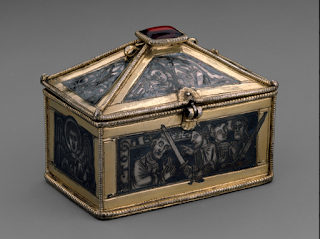3. Do you believe events in your life have been guided by
fate or
chance? Why or why not? Based on the text, what do you think
Shakespeare's attitude was towards fate? Does Macbeth have any choice in
his actions or was everything predetermined?
Use examples from the text as your support.
The concept of fate vs free will is an incredibly popular topic among archaic (or ancient, whatever works) literature. Examples of this are Oedipus Rex (sophomore year anyone?) and probably some other books that are super popular that I can't remember right now. Shakespeare's Macbeth is filled with the idea of fate vs free will, with the witches, supernatural elements, Macbeth's slow decent into complete madness, and even his murder of characters such as King Duncan and (SPOILER ALERT!) Banquo.
Fate vs free will has always been a tough subject for me to answer, partly because I constantly doubt myself after I make a definitive answer. Macbeth's case is no different. There are completely valid arguments on both sides, so forgive me if I sound like either a devil's advocate or an incredibly indecisive individual (Assonance and articulation! See what I did there?) .
Macbeth has encountered the supernatural and fate through the Weird Sisters in Act 1, and that has started the spiral into his madness for lack of a better word. Shakespeare was probably going for more of the fate side, and this is proven right away by how much he includes the supernatural in the play. There is so much rhyme that indicates the supernatural, which in this case is fate.
Another piece of evidence for this is in a recent scene (SPOILER ALERT!!) where three murders have a light so that they are able to kill Banquo and Fleeance, and then the light goes out. Neither of the three murders touched the light, and it went out as if by magic (or fate). Even more evidence for this is the event right after the Weird Sister's prophecy - Macbeth becoming Thane of Cawdor. This coincidence is fate coming into play.
Shakespeare, while having fate be the majority of the reason why the events in Macbeth happen the way they do, doesn't completely control all of his actions. There are definitely moments where he controlled himself and he wasn't dictated by fate. One piece of evidence for this is when he is making the decision to murder Banquo to stop his prophecy from happening.
Another piece of evidence for this is when Macbeth actually kills King Duncan. While it was mentioned in the prophecy that Macbeth would become king, it never said how. His decision to murder King Duncan was his to make, despite a dagger possibly appearing out of nowhere.
Now, why on earth would Shakespeare decide to have fate control events, but not completely control Macbeth's actions? Well, to a super paranoid man such as King James, fate dictating life is not only terrifying, but allowing people to have a bit of freedom of how they execute things makes it so much worse. Poor King James! He probably had nightmares for weeks after seeing Macbeth.
So now that I have talked all about Macbeth, I guess I'm supposed to evaluate whether my life is controlled by fate, and also question how fast I'll be able to sleep for the next week, or month.
There have definitely been events in my life where I've said "Okay, what are the chances of THAT ever happening?!", and these events I think may have been driven by fate. Actually, all of this is ironic for me because I'm a huge believer in karma, yet I don't consider myself to be incredibly spiritual or religious.
Some of the craziest events that I have to believe are driven by fate are the rather unfortunate several deaths that I've had in my family, starting from when I was about 6 years old. This is not to turn this post into a sob story; I've just had a lot of people die over the 17 years I've been alive. The range of evaluations have been used: a heart attack & old age being some of them, but I think they just happened for a reason. However, my aunt's death was so mysterious that I have to believe that it was a result of fate. I actually remember asking if anything would happen to her and her baby, and no one really believed me, so I think that was a bit of fate too in a twisted, horrifying way.
Obviously, having several people & a dog that you know and love die in under a decade is something I don't find to just be a coincidence, and I think that fate has really played a part in most of those deaths. Why? I think it might be to balance out the life I have always had, as it has never been straining, I've never had other family issues, and I'm now incredibly thankful for what I have because of what has happened over the years. I can't say that I would be as thankful (which sounds horrible) if I hadn't experienced these traumas.
Onto a happier part of the blog (I promise I'm done with the sad stuff!), my entire existence is based off of fate. My parents met by complete coincidence on a literal street corner. Long story short, my dad had two options, go out to a bar with his friends or leave and go home. My mom also had two options, take the long, lighted way home, or the shady dark alleyway home. My mom would typically take the dark and shady path, but that particular day she decided to take the lighted way home, and that's when she met my dad. Had she taken a different path, or had my dad decided to go home at any point, they never would have met and I would never have been born. Crazy right?
I think that incredibly important events in my life have been controlled by fate, and I think this is because to either balance out all of the good in my life, or just to say it can. However, the little events, I think I control, because they are my decision to make. So, the answer is... both?



